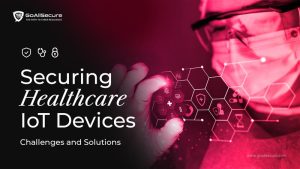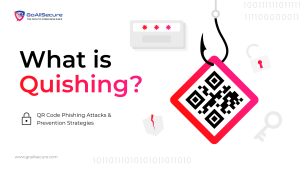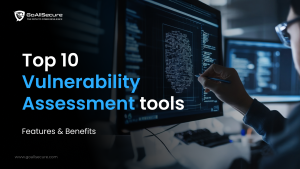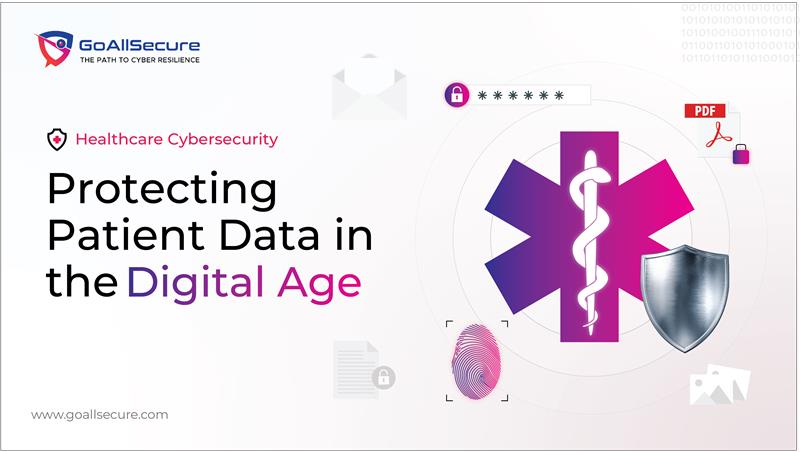Protecting patient data has become one of the most important responsibilities for medical institutions in the modern era of digital healthcare. Today, when everything from prescriptions to diagnostic imaging is kept and sent electronically, data theft has become a greater threat. Names, addresses, health histories, insurance records, and even genetic data are at risk if data theft occurs. Hospitals, clinics, diagnostic labs, insurance companies, and even personal wellness apps are all highly sensitive personal information repositories. For cybercriminals, this makes the healthcare industry among the most profitable targets.
The future of healthcare depends on robust cybersecurity. By prioritising data protection, cultivating a cybersecurity culture, and embracing continuous improvement, the healthcare industry can establish a safe and secure environment for patients, service providers, and the entire healthcare ecosystem. Improving cybersecurity in healthcare is critical for the smooth running of medical institutions and protecting remote patient information. This blog shines a light on the importance of health data and why cybercriminals are targeting healthcare systems. You will also learn how to build a robust cybersecurity framework for your healthcare facility.
The Importance of Health Data—and the Reason Hackers Want It
Fast and accurate database systems are crucial in healthcare because they allow access to staggering volumes of patient data with the click of a mouse or the tap of a screen. The significance of reliable data in healthcare can be the difference between life and death for that individual patient and the wider group of patients as a whole. Doctors today require rapid access to the most current and accurate patient information at all stages of the care process. These health records are permanent and very personal, unlike credit card information, which can be replaced in a few hours. Once pilfered, they cannot be revoked or replaced. Medical histories of patients include diagnoses, prescriptions, mental health records, family information, and other data that might be used in identity theft, insurance fraud, blackmail, and even in generating fictitious medical claims or prescriptions.
On the dark web, one electronic health record (EHR) might sell for more than 10 to 20 times the value of a credit card number. Since the COVID-19 epidemic normalised telehealth and remote care systems, this economic incentive has pushed ransomware groups and advanced persistent threat actors to target healthcare systems with growing aggressiveness, especially. The outdated systems that lack modern security updates are obvious targets for fraudsters. The high-pressure environment in healthcare also means that personnel frequently prioritise patient care over cybersecurity protocols, resulting in weaknesses that attackers can exploit.
The Threat Landscape Healthcare Organisations Face
Recently cyberattacks on healthcare systems have increased not only in frequency but also in complexity. Ransomware attacks have closed down hospitals, postponing emergency treatment and operations. Personal records leaked from compromised patient portals have compromised thousands of people. Attackers have pilfered the login credentials of administrative personnel and doctors using phoney emails. And in some of the most horrific events, malware has caused linked medical equipment to malfunction.
These are not unique incidents. According to the latest reports conducted in 2025, almost one in every three healthcare companies worldwide reported a cyber incident during the past twelve months. From little clinics to big hospital systems, nobody is immune. Attackers take advantage of antiquated systems, poor passwords, unpatched software, unsecured mobile devices, and human mistakes—all of which are common in high-pressure medical settings.
The Part Compliance and Regulations Play
In response, governments and regulatory agencies all around have tightened data protection rules. HIPAA (Health Insurance Portability and Accountability Act) defines how patient data ought to be kept, accessed, and shared. GDPR rules apply to any healthcare provider managing EU citizens’ data throughout Europe. Countries including India, Australia, and Canada have developed their own privacy rules requiring medical facilities to safeguard records or pay fines.
Compliance alone, though, is insufficient. While regulatory compliance should be the beginning point, many companies view regulatory checklists as the endpoint for security. Cybersecurity has to be ingrained in every healthcare company’s operations, technology, and culture, going beyond policy.
Constructing a Resilient Healthcare Cybersecurity Framework
Healthcare organisations must have a multi-layered, risk-based cybersecurity strategy that relies on departmental cooperation rather than one tool or team if they are to really safeguard patient data. Organisations that implement proactive cybersecurity measures can maintain regulatory compliance, preserve patient privacy, and assure excellent treatment. The basis must be on maintaining the IT infrastructure—that is, on using modern operating systems, encrypting transmitted and stored data, imposing rigorous access limits, and separating sensitive systems from general-use networks. Furthermore, crucial for spotting odd behaviour before it becomes a breach are network monitoring and endpoint protection.
But one cannot rely just on technology. Most healthcare breaches start with human mistakes, even today. Staff members might leave devices unoccupied, copy passwords, or fall for phishing emails. Regular cybersecurity training and awareness campaigns are therefore absolutely essential. From front-desk receptionists to elite surgeons, everyone has to know their part in data security. Incident response planning is yet another essential component. Every healthcare provider needs to have a well-defined, tested strategy in place for handling a breach. This covers system isolation, who to notify, how to bring operations back online, and patient and official correspondence. An organisation will suffer less the faster it can react to an incident. It is important to remember that your best bet is to be vigilant and guarded.
Remote Care and Telemedicine: A New Frontier with Fresh Risks
The emergence of telemedicine has revolutionised patient treatment by providing millions of convenient access points. It has, nevertheless, also extended the attack surface. IoT-enabled medical devices, mobile health apps, and video consultations all depend on networks—perhaps secure or perhaps not. Should these systems lack robust encryption and user authentication, they can turn into doors for invaders. Third-party vendors, cloud platforms, and software programs used by healthcare professionals have to be equally compliant and safe. A weak link in the vendor chain might reveal a patient data ecosystem as a whole.
In Conclusion, Saving Lives Involves Securing Data
Protecting patient data is now a form of treatment, not only a compliance need in the digital age. We cannot afford to leave their digital records open to the internet, much as a doctor wouldn’t leave a patient’s chart lying open in a waiting room. A cyberattack on a hospital is human with real-world effects on patient safety, trust, and welfare; it is not only a technical one.
Healthcare professionals must understand that patient care extends beyond direct care and involves data security as well. Cybersecurity investment is patient safety investment. More important than anything, it calls for a mindset that treats data with the same dignity and urgency as a patient in crisis as well as leadership, training, and technology. Ultimately, responsibility rather than firewalls or passwords defines the core of healthcare cybersecurity.
Frequently Asked Questions (FAQs)
1. Why are cybercriminals mostly aiming at healthcare?
Huge volumes of private and highly sensitive data are stored by healthcare institutions. This covers personal information, insurance details, medical records, etc.
2. What are the most occurring cyber threats in healthcare?
Among the most often occurring threats are ransomware attacks, phishing scams, credential theft, and attacks on linked medical devices. Human error and antiquated systems make these attacks easier.
3. Is following rules like HIPAA or GDPR sufficient to protect patient information?
While not enough, compliance is absolutely necessary. Beyond legal requirements, companies have to create a strong, proactive cybersecurity culture comprising technical defences, staff training, and incident response planning, including staff technical expertise.
4. In what ways might telemedicine compromise healthcare cybersecurity?
Remote access points, cloud platforms, and outside apps added by telemedicine expand the attack surface. These have to be locked via vendor risk management, authentication, and encryption.
5. How might staff training help to stop breaches?
One main source of breaches is human error. Frequent training enables employees to practise safe behaviours, identify phishing attempts, and realise their accountability for safeguarding patient information.
6. Can artificial intelligence assist in making healthcare cyber-resilient?
Yes. Real-time threat detection, user behaviour monitoring, and automated responses are made possible by artificial intelligence. Healthcare companies can use AI to keep ahead of threats and build intelligent and flexible defences.


















 TRAVEL & HOSPITALITY
TRAVEL & HOSPITALITY HEALTHCARE
HEALTHCARE RETAILS & ECOMMERCE
RETAILS & ECOMMERCE BANKING & FINANCIAL
BANKING & FINANCIAL AutoMobile
AutoMobile MANUFACTURING
MANUFACTURING FOOD
FOOD EDUCATION
EDUCATION







